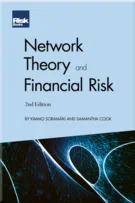Risk Trading, Risky Debt and Financial Stability
Stephen Kealhofer
Foreword
Introduction
An Exploration of the Evolution of Risk: Past, Present and Future
Risk Trading, Risky Debt and Financial Stability
Skating on Thinner Ice: A Macroeconomic Outlook at the End of the Credit Cycle
Climate Change: Managing a New Financial Risk
The Quest to Save Risk-Weighted Assets
The Evolution of the CLO Market since the Global Financial Crisis and a Valuation Approach for CLO Tranches
Homo Ex Machina: Finance Rebooted
Innovation and Digitisation in Credit: A Global Perspective
The Lending Revolution: How Digital Credit Is Changing Banks from the Inside
Digital Lending in Asia: Disruption and Continuity
Digitisation and Automation in Commercial Lending: Disruption without Distraction
Credit Risk Management in the Era of Big Data: From Measurement to Insight
Artificial Intelligence and Machine Learning in Credit Risk Analytics: Present, Past and Future
Integrated Loan Portfolio Modelling and Risk Management
The Role of Banks in Illiquid Credit Markets, and the Disruption and Evolution of Credit Portfolio Management
Epilogue
In 1980, financial markets traded securities, principally stocks and government bonds. In the mid 2000s, they primarily traded risks; securities were a distant second. An astonishing change.
Before the 1980s, there was not very much risky debt. Corporations almost solely issued investment grade debt. Banks were just in the process of making a lot of bad loans to foreign governments, but they did not think they were risky. The risky debt that existed was consumer debt: credit card and mortgage debt. The former was carefully doled out to the better borrowers at exorbitant rates; the latter was all insured by the government. Twenty-five years later there was a burgeoning supply of risky corporate debt, risky sovereign debt and risky consumer debt. In fact, the financial industry was just in the process of originating US$2 trillion of sub-prime mortgages.
In the 1980s, banks, even in money centres, were distinct from investment banks. They primarily made loans to governments and businesses – large, medium-sized and even small businesses – although the latter usually with government guarantees. Twenty-five years later, money centre banks and investment banks had become largely
Copyright Infopro Digital Limited. All rights reserved.
As outlined in our terms and conditions, https://www.infopro-digital.com/terms-and-conditions/subscriptions/ (point 2.4), printing is limited to a single copy.
If you would like to purchase additional rights please email info@risk.net
Copyright Infopro Digital Limited. All rights reserved.
You may share this content using our article tools. As outlined in our terms and conditions, https://www.infopro-digital.com/terms-and-conditions/subscriptions/ (clause 2.4), an Authorised User may only make one copy of the materials for their own personal use. You must also comply with the restrictions in clause 2.5.
If you would like to purchase additional rights please email info@risk.net









